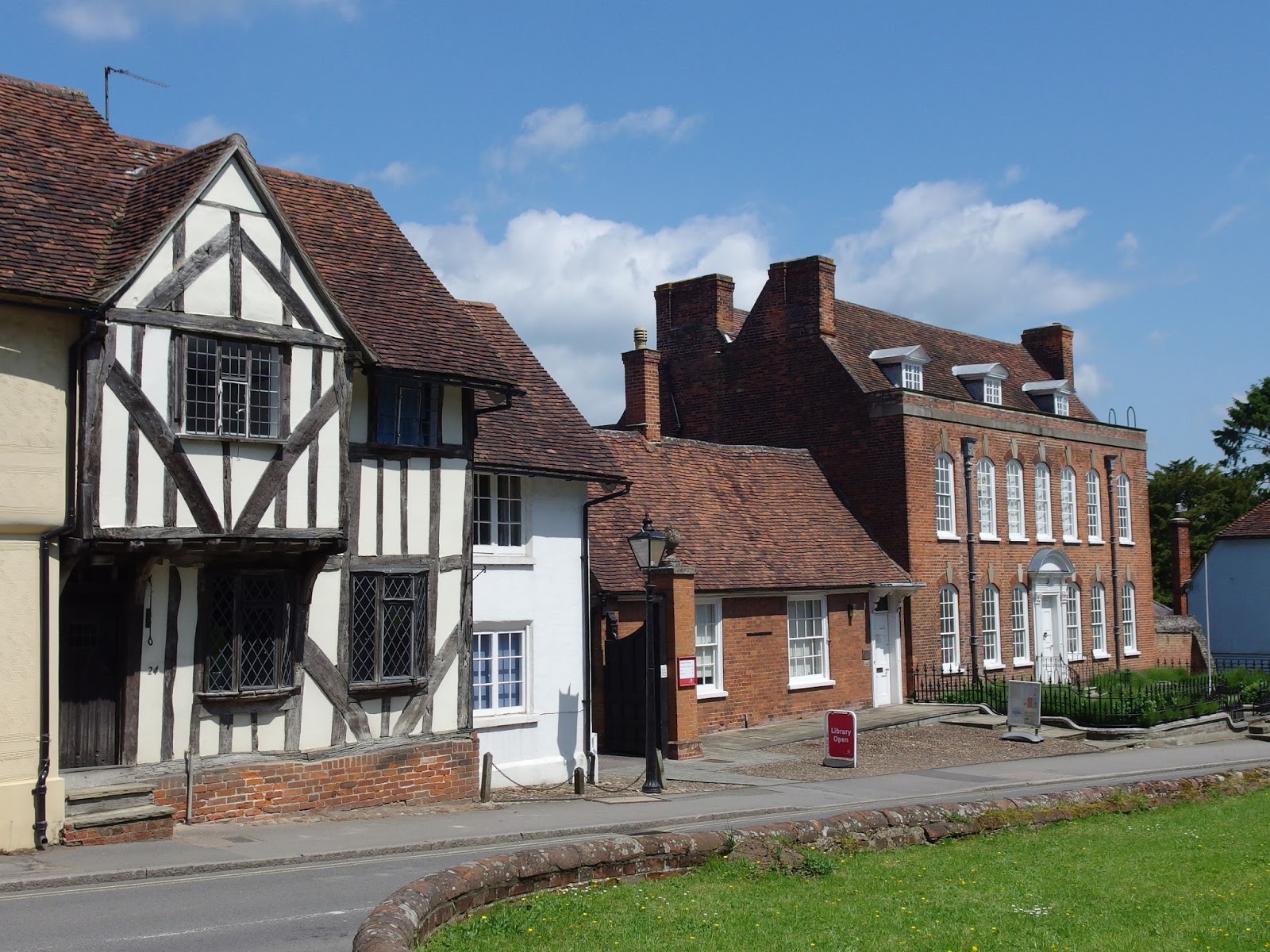While I awaited the arrival of the Morris dancers at Widdington I fell into conversation with a man from the local allotment gardeners society. He spoke with obvious pride of his young nephew who was a Morris dancer. And when the dancers arrived it was pleasing to see that there were one or two youngsters amid the ale-drinkers and greybeards.
And the town should be proud of its traditions too, for The Thaxted Morris Men are the oldest revival side in the country. To understand how this all came about we must go back to meet, Conrad le Despenser Roden Noel, also dubbed The Red Vicar.
Conrad Noel was born in 1869, son of the poet Roden Noel and grandson of the Earl of Gainsborough. Bullied at school and sent down from Cambridge University, he eventually made his way to theological college. However his strong Socialist views and his interest in Anglo-Catholicism rather hindered his chances. A long and penniless road led him to work in the slums of Portsmouth and London, which only strengthened his ideals, until eventually in 1910, he secured the living at Thaxted through the intervention of "Daisy" Greville, Countess of Warwick, who managed the clever trick of donating large sums to socialist causes and was also the mistress of the Prince of Wales!
Although the Victorian age is synonymous with the growth of empire and industry it also threw up a counter-culture which included the Arts and Crafts movement, Gothic architecture and writing, Anglo-Catholicism and, indeed, the preservation of folksong and dance. We perhaps should not be surprised by these contradictory strands; after all the same generation that went off to the moon also went back to the land.
Noel's character as much as his theology demanded a more colourful church and some of his legacy survives to this day.
He bought and restored an old thatched cottage that stood next to the almshouses in Thaxted. He also organised a festival of music with his good friend Gustav Holst who lived in the town in a house which, for very good reason, was known as "Steps".
Noel held several offices in various branches of the socialist movement, spoke publicly on many controversial issues and wrote books on a variety of topics. All this, along with the walls of his study being painted red, earned him the title of "The Red Vicar", at least among the press. His most notorious act was to hang both the Red Flag and the flag of Sinn Fein in the church as a protest against what he saw as Britain's subjugation of poorer peoples. Not surprisingly this did not pass unnoticed and counter-protests were organised by his opponents who tore down the flags and paraded the Union Jack through the streets. This episode became known as The Battle Of The Flags.
If politics and theology were all there was to Noel he might not have lasted long in a place like Thaxted (hardly a hotbed of revolution!) but he was equally energetic and tireless within the community and was a charismatic character who, although capable of the highest intellectual debate, also had the knack of talking directly and entertainingly.
Along with his wife Miriam he re-introduced the old customs of Morris and maypole dancing and brought in more expert help to teach the dancers to young women, young men and children of the town. These dances had been noted down by Cecil Sharp only a few years before in the villages of the Cotswolds where the tradition had survived (just). They also learned to dance The Abbots Bromley Horn Dance, which may well date back to Saxon times or even earlier, and their version of this dance is still danced in the town - which explains why these seemingly pagan items were waiting patiently in the church.
The Morris Ring - the national association of men's Morris and sword dancers - held their first meeting at Thaxted in 1934. There were five sides present including Cambridge and Letchworth who were also present dancing in the town last weekend.
Many dancers will be familiar with much of the above information. But there are others for whom the whole purpose of the exercise can be seen in the picture below.
Take care.














What a joy your Thaxted posts have been John - they have brought back so many happy memories.
ReplyDeleteInteresting mix of architecture in that 9th photo.
ReplyDeleteIts amazing that your country has preserved so many different types of dancing. We do have some Celtic dancers in the southern part of our country but they are seldom offered up as popular dancing .Enjoyed -- barbara
ReplyDeleteInteresting story about Conrad Noel.
ReplyDeleteThe Morris dancers are so colorful. We actually have a group of Morris dancers in Minnesota! I've seen them perform at several outdoor festivals in the summer.
Quite the story!
ReplyDeleteJohn, how many times and how many different ways can I tell you I love your tales and your photos and the subjects, like Morris dancers, royal mistresses, composers, old Socialists and colorful eagles.
ReplyDelete"...the whole purpose of the exercise can be seen in the picture below." Okay, now I understand it.
ReplyDeleteAn interesting read. I always enjoy seeing Morris dancers.
ReplyDelete